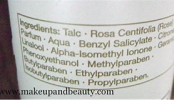- Joined
- Dec 5, 2005
- Messages
- 28,268
I recently had a little controversy with an acquaintance regarding heat treatment methodology and I thought it might be a fun topic to discuss here. Apologies in advance if the topic has been discussed ad nauseam.
This fellow works for a mold making company, and his job is to heat treat their stuff so I guess he could be referred to as a professional heat treater. After I posted up a picture of a blade I'd heat treated on IG, he said that if I'm not putting a piece of combustible material in the envelope with the knife, then I'm wasting my time putting the knife in foil at all.
The point that I kept trying to make, before he blocked me, (lol) is that by combusting material in there, you're simply replacing the oxygen with carbon dioxide and water vapour, neither of which are significantly better for your steel than oxygen. Also, the less oxygen the better, so a carefully fitted envelope is probably the best option.
The stainless foil, I've heard, contains some form of titanium(?) which apparently does something mysterious to the oxygen in the envelope, making it all hunky dory.
Anyway, I've talked with people and have done some reading, and that has lead me to the conclusion that just the foil is enough, and that messing around with kerosene or paper or whatever is more of a waste of time and potentially damaging to my knife. But I barely know anything, so I'd like to hear as many opinions on the subject as possible.
So, what do you think?
This fellow works for a mold making company, and his job is to heat treat their stuff so I guess he could be referred to as a professional heat treater. After I posted up a picture of a blade I'd heat treated on IG, he said that if I'm not putting a piece of combustible material in the envelope with the knife, then I'm wasting my time putting the knife in foil at all.
The point that I kept trying to make, before he blocked me, (lol) is that by combusting material in there, you're simply replacing the oxygen with carbon dioxide and water vapour, neither of which are significantly better for your steel than oxygen. Also, the less oxygen the better, so a carefully fitted envelope is probably the best option.
The stainless foil, I've heard, contains some form of titanium(?) which apparently does something mysterious to the oxygen in the envelope, making it all hunky dory.
Anyway, I've talked with people and have done some reading, and that has lead me to the conclusion that just the foil is enough, and that messing around with kerosene or paper or whatever is more of a waste of time and potentially damaging to my knife. But I barely know anything, so I'd like to hear as many opinions on the subject as possible.
So, what do you think?


